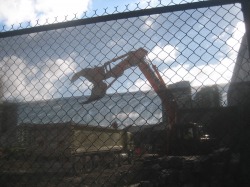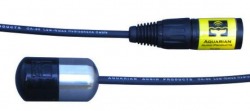|
Location Melbourne area Equipment Zoom H4N MKh60 Boom Pole and Zoom H4 D112 mini tripod H2a Another busy day of walking and recording. I realized that even though I have recorded several vehicles and tried to make comprehensive lists of all the sounds of each vehicle I have never recorded general traffic sounds. For a current project I need some large trucks driving by as well as lots of cars passing and general traffic ambiance sounds. So I set out to position myself along some of Melbourne’s busy roads to capture some material. First off I got completely distracted by a nearby construction site. There was a crane with a claw attachment picking up concrete pylons and dropping them into the back of a dump truck. The resulting crashes were really good, so I spend easily 20 minutes standing about 20 meters away recording as much as I could. I am always disappointed that these events are accompanied by the ever present diesel sound of the crane itself. It would be great to be able to get just the crashing sound, but considering the shear weight of the pylons that is never going to happen. The impact itself is always so loud as to cover other sounds, but the trail off of the sound will always include the sound of the crane engine. It amazes me how people react when they see a microphone. It doesn’t even matter if it’s switched on, or if I am obviously holding in such a manner that shows I am not recording; you always get people yelling, calling out “hi mom” or just being determined to get their voice recorded. Its no different when you put them in cars. The number of people that drove past me honking their horns as I was recording traffic was amazing. In this case however it was actually kind of useful to me as it gave a nice sense of city traffic ambience. I walked several kilometres around one of the major freeways into Melbourne and recorded cars both entering and leaving the freeway, as well as a good amount of material of cars running on the freeway. One of the main issues I have found with recording traffic is that the dynamic range is far more that I often expect it to be. A standard car driving past dies not alter the input levels greatly, but a motorbike (especially something like a Harley) is so much louder that it risks peaking the levels. Trucks are similar as they generate a lot more sound as they pass. Its often good to capture the sounds of the trucks, but this means the cars tend to be too quiet. It becomes a bit of a game riding the levels and watching what is coming past next. I caught a train out to where I had recorded some amazing factory sounds a few years back to find the factory was closed down and was now new apartments. This was really disappointing as this factory had some of the best sound machines I have heard and had access right on the street so recording them was easy. I had recorded them in the past with older equipment, but I wanted to get an updated recording and test my new mics. It seems to be getting harder and harder to get access to places like factories as they are all on huge estates these days with giant fences miles away from the buildings. I wont trespass so its great when I do find a place right on the street. I made the most of being right next to a train line and tested out the D112 very close to the rails as a train went past. The D112 is designed to capture loud sounds and dealt with being only a couple of feet away from the train really well. Any of my other mics would have peaked badly. The D112 just took it all in its stride. This will be a good mic to use on firearms more in the future. After I got home and had a bit of a rest. (I have walked over 10 kilometres so far today) I did a few tests in a bucket full of water with the H2A hydrophone. I have bought a couple of cans of compressed air to generate bubbles underwater. The bucket is obviously too small and the sounds reflect of the sides very obviously. The issue with using the pool at the apartment is the water filers system makes a constant obvious hum. So a walk down to the docks was in order. Checkout a review of the H2A XLR in the reviews section I set myself up so the hydrophone was submerged about a foot in the water, then reached down with the compressed air can and released busts of air. I did this until I had emptied the can, shifting positions so the bubbles came up under the mic, past the side of the mic, and away from the mic. Each position produced slightly different sounds. I released short and long bursts. I have since altered the pitch of some of the material and it produces really effective huge bubble sounds like a large explosive device being triggered underwater. I plan to make a whole series of underwater explosions sometime soon. I also want to do a lot more underwater recording as I am really enjoying the new opportunities the H2A is providing me with. Just one note, be careful if you are using compressed air in cans. The water itself was already pretty cold in winter, adding to that a can of air under pressure and my hand got really cold. I actually froze a couple of fingers briefly which was somewhat disconcerting.
0 Comments
Leave a Reply. |
AuthorStephan Schütze has been recording sounds for over twenty years. This journal logs his thoughts and experiences Categories
All
Archives
April 2019
|


 RSS Feed
RSS Feed
